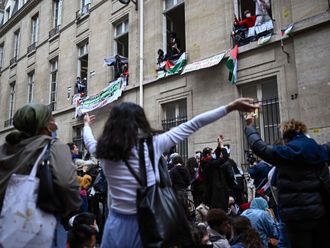Occupied Jerusalem: What would occupied Jerusalem be without its walls? Poets have sung of them since ancient times, they are mentioned in the Book of Psalms, and they have shadowed conflicts past and present.
The current golden limestone walls date back to the 16th century. Ottoman Sultan Sulaiman the Magnificent ordered the iconic ramparts built after his father, Selim the Grim, brought Jerusalem under Turkish rule in 1517.
The city remained under Ottoman rule for 400 years, until British General Edmund Allenby marched through the Jaffa Gate on December 11, 1917, the start of 30 years of British rule.
Over the course of its tumultuous 3,000-year history, occupied Jerusalem’s Old City has had many masters — from the ancient Persians and Babylonians all the way up to Jordan and the regime in Tel Aviv. There have been almost as many walls, some torn down by wars or earthquakes.
Today, the 4km circuit around the Old City walls brings visitors face to face with Jews, Muslims and Christian Arabs, Armenians, and tourists from around the globe.
But the Old City, its walls and its famed religious sites — holy to Muslims, Jews and Christians — are once again at the heart of a renewed conflict. Both the Israeli occupation regime and the Palestinians lay claim to the 215 acres (less than one square kilometre) bound by the walls.
The Israeli regime captured the Old City, which was part of Jordanian-controlled East Jerusalem, in the 1967 Mideast war. Israel later annexed the entire East Jerusalem, a move which the international community doesn’t recognise. Palestinians seek occupied East Jerusalem and the Old City as the capital of their future state.
These conflicting claims have erupted into violence numerous times in the past. On December 6, President Donald Trump declared occupied Jerusalem to be Israel’s capital, enraging Palestinians and much of the Muslim world.
But in the shadow of the walls, day-to-day life flourishes. Families picnic, worshippers pray, hawkers peddle souvenirs and snacks, and artists use the sand-hued stone as their canvas.












